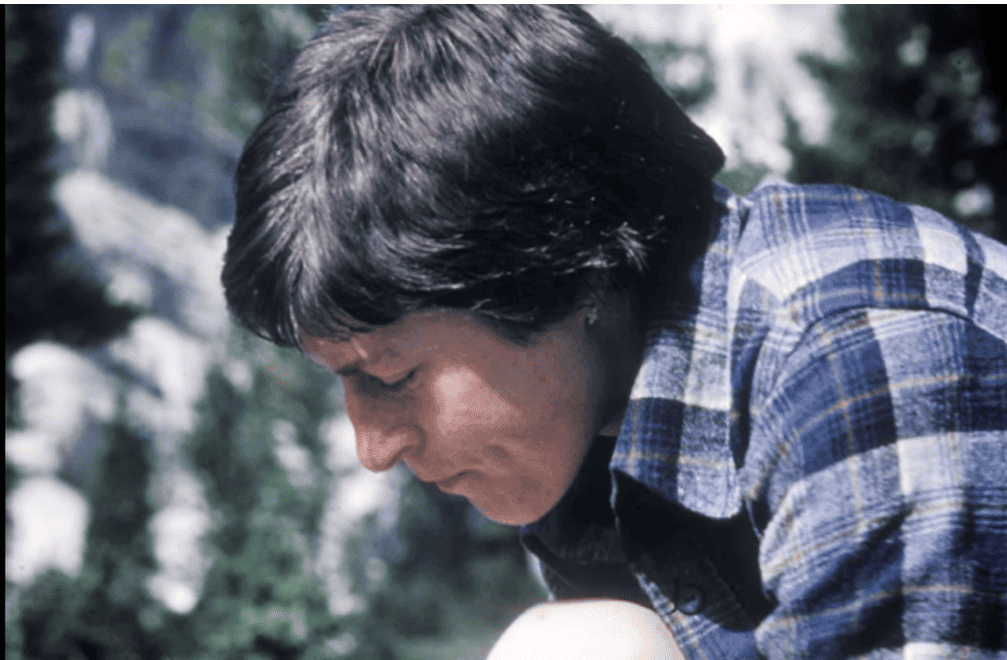When blazing new trails, don’t forget to play
Jean Ella, aka Jeannie Smith, and her companion Lynn Wisehart were the first women to thru-hike the Continental Divide Trail, coinciding with the year of its official designation as a National Scenic Trail in 1978. Jean also hiked the Pacific Crest Trail in 1976 with Cynthia Stockwell.
In this interview, Jean talks about drawing strength as a woman hiking “alone”, collaboration, and the importance of play. Her energy is inspiring, and she shared her stories always with a laugh.
Jean Ella resides in Oregon and by the interview’s end, snow was falling lightly, and she was putting a songbook in the mail to Montana.
Tell me about the importance of representation, as a women, doing these big hikes:
It was very important to me to be representative of women. That was a main reason that I did these hikes. And especially after having done the Pacific Crest Trail, because every time we met someone, the first response was, “You’re alone,” meaning: There’s not a man with you.
I had never really thought of myself as a second-class citizen. After that, I did kind of feel that way. Everyone was surprised to see that we didn’t have a man, not just accompanying us, but taking care of us.

So, that became a part of it for me. I had a boyfriend at that time, and he decided that he wanted to come and hike a portion with us. And he was very athletic person. We were doing 15 miles a day, this is on the Pacific Crest Trail, but we were also carrying heavy packs and finding our way.
I kept saying, don’t bring your stove, we have a stove, you know, go light. Well, he brought his dog he brought canned dog food, and he brought a big stove, one of those metal ones that weighs about as much as four bricks. He didn’t he didn’t make it through the first day. That was such a shift for me.
While hiking the PCT, Jean and her companion Cynthia Stockwell encountered a storm in the San Jacintos Mountains of Southern California. Other groups were evacuating, but Jean and Cynthia kept going.
I remember that we didn’t know any better. We didn’t have anybody who was going to evacuate us either or any way to communicate.
When we were going along the ridge of this mountain group, the Ridge was to our left and we were using a rock wall as our reference. And all of a sudden, I looked at my compass and it looked like we were going the opposite direction. I had taken a map and compass class, and I knew how to use my compass. And I went, wait, is my compass wrong, or did we go around the end of that rock outcropping and just kept going? And sure enough, that’s what had happened.
It was cold and grueling, and we were out of gas at the end, so we couldn’t cook- that was a good lesson to always carry extra. We made it to the next little town Cabazon and everybody was waiting there for us, hoping that we would make it. But, that really gave us a lot of confidence, and Cynthia is still one of my very best friends.
How important were your companions in accomplishing what you set out to do?
For me, [they] were essential. I don’t think I ever thought of it in terms of doing it all by myself. I mean, there were times when you get into a scary situation, and we helped each other out. There were times when they needed help and times when I needed it.
After finishing her graduate degree in Exercise Physiology, Jean and her partner Julie hiked the Pacific Northwest Trail together and following, founded an adventure company.
We started Wild Women Adventures and that was pretty amazing. We did raft trips, horseback trips, and we taught classes. We sang songs a lot, and even had song books.
We rafted the Grand Canyon, which is the fastest water on the North American continent- biggest and fastest. We did that three times, and then on the last trip, all of us on the trip were all women. So, we wore skirts. It was wonderful to protect the tops of our legs, but then we’re out there scouting on the rocks- all wearing skirts!
Laughter was really the most important part of that trip. We just played; it was just pure play.
I take delight in
I Take Delight, Songs of the Wild, 1985
the peace of the river
that flows so gently
to the strength of the sea
and I take delight in
the love that keeps flowing
just like the river
between you and me.

###

Jean and her CDT hiking companion Lynn Wisehart created a documentary chronicling their experience on the Trail: WATCH
It is important to note, at the beginning of the film, the CDT mileage is estimated at 2,600 miles. We now know the Continental Divide Trail to be 3,100 miles long.
Audra Labert
CDTC Communications Manager
Helena, MT

